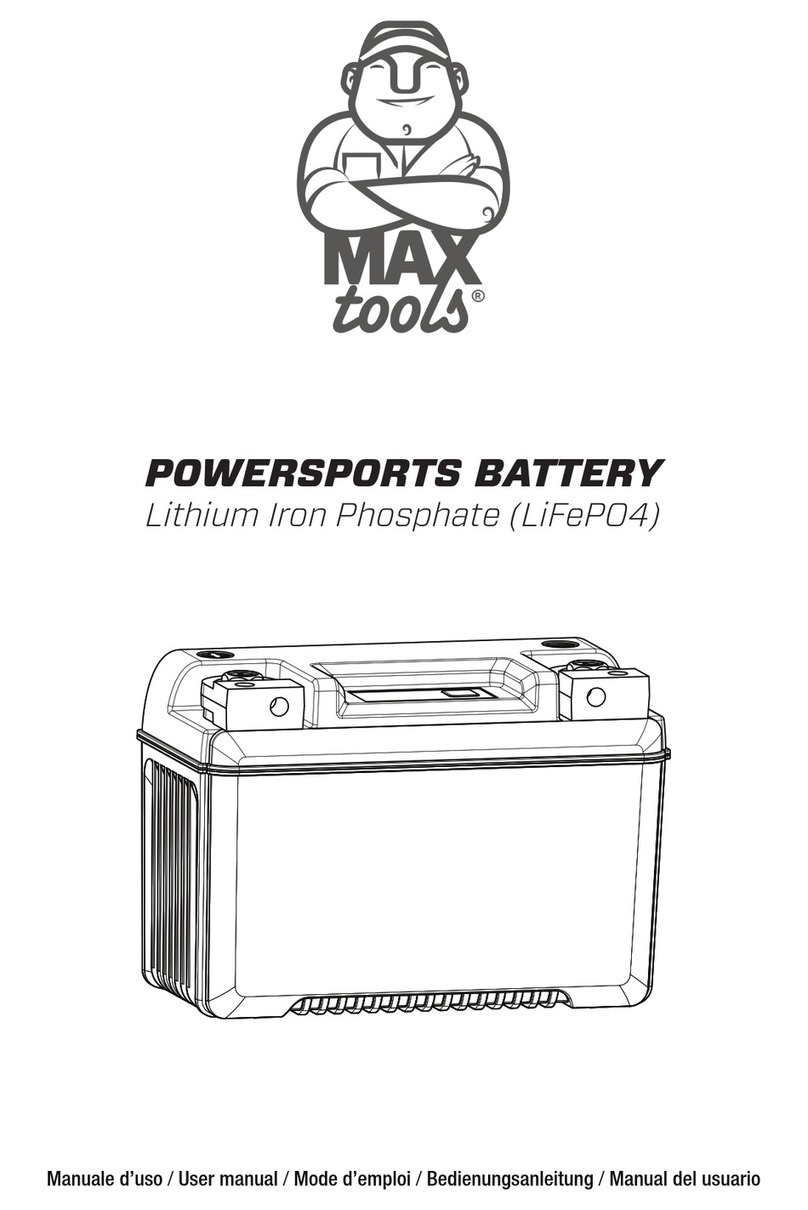
8
ATTENZIONI E PRECAUZIONI
• Non invertire la polarità della batteria nella connessione al sistema.
• Non toccare inutilmente i poli della batteria con cavi o parti metalliche per evitare corto circuiti
• Non forare, far cadere, urtare la batteria
• Non disassemblare la batteria e non modificare il contenitore.
• Non lasciare la batteria al sole in quanto potete causare surriscaldamento tale da danneggiare
irreparabilmente la batteria o farle prendere fuoco.
• Non gettare la batteria nel fuoco, non conservarla in ambienti surriscaldati.
• Non immergere la batteria in acqua, né lasciarla alla pioggia per lunghi periodi. La batteria deve essere
conservata in luoghi freschi e asciutti.
• Se avvertite un odore o rumore anomalo durante la carica o la scarica, rimuovete immediatamente la
batteria e contattate il venditore.
• Quando la batteria è usata nel range da 0°C a 50°C la capacità nel tempo può decadere, ma non significa
che la batteria sia danneggiata.
RICERCA DEI PROBLEMI
Problema Possibili cause Soluzioni
Non eroga corrente BMS in stato di protezione
Controllare i circuiti e ii tipo
di carico, per verificare che la
batteria sia caricata e scaricata
nel range di lavoro ammesso dalle
Specifiche Tecniche
BMS in avaria Sostituire la batteria
La batteria eroga
corrente per un
periodo di tempo
limitato
La tensione di ricarica è troppo bassa e la
batteria non viene caricata al massimo
Regolare la tensione di ricarica a
14,4V
Il carico è troppo elevato e la batteria non
può essere scaricata a fondo
Ridurre il carico o sostituire la
batteria con una di maggiore
capacità
Sovratemperatura Ridurre la temperatura ambiente a
livelli accettabili
La capacità della batteria è diventata
insufficiente Sostituire la batteria
La batteria si
surriscalda
Sovracorrente Ridurre il carico di lavoro
Sovratemperatura Operare nel range di temperatura
ammesso
Scintille ai terminali
Connessione iniziale al carico Nessuna azione richiesta
Corto circuito del carico Staccare immediatamente il carico
e ricercare la causa
Italiano




























